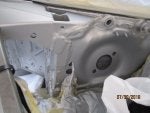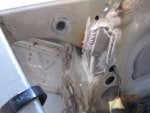Ok, I have to weigh in here. I was looking at having my 2009 R8's frame reinforced this past spring.I spent months and a great deal of time looking into it.
I talked to every Audi dealer, and every certified Audi repair shop in my part of the state. The dealers were not even willing to discuss the issue. I then talked to, or visited four Audi certified shops who all told me the exact same thing, "we can't touch this. Audi only allows us to make repairs, and they do not acknowledge this issue as existing. If we made the repair, it could cost us our contract with Audi". The manager of one very large Audi certified shop, who makes all kinds of repairs for Audi even went to a trusted resource in Audi management, someone he has been able to reach out for help from for years, on the technical/service side. He told him, again, this problem does not exist, and even if you were foolish enough to attempt it would almost certainly damage the frame. He also said for Audi to even consider such a thing, a chemical analysis of the existing frame would be necessary at a cost of over $6k, just to absolutely determine that cracks even existed. And even then, he would make no promises. And yes, I saw Audi corporate documentation at two different, very prominent shops that they were not to involve themselves, in any way, with this work!
I then went to three outstanding professional welders, all certified in aluminum welding, with a cumulative ninety five YEARS of welding experience. Again, they each told me that attempting to weld the Audi made plates to the frame introduced too much risk of weaking the existing frame, and they recommended that I drop my plans to have that work done.
I then went to a close personal friend who is near the very top level of Audi world management. I asked him to talk to his contacts. These included the project manager who oversaw the R8 development and initial production. He was told, across the board, that Audi has only ever seen a few (3-4 total) instances of this, and each one related to the cars frame having been abused in a serious front end accident, hitting a curb at a high rate of speed, etc.
I live in the Detroit area. There are endless numbers of world class car repair, welding and frame shops here. NO one will touch this, no one will acknowledge it. It's that simple. To the OP, I hope I'm wrong, but I can only imagine that whoever the establishment was that you worked with, and I absolutely refuse to believe it was an Audi dealer, or anyone, in any way associated with them, had never done this before, had no awareness of it, and simply saw this as a chance to milk you for $5,500.00. That's five times the average price that has been noted by people who have had the work done elsewhere, averaging $1000-1100.00. And that included shops all over the country. Before Audi shut them down, three shops here quoted me "no more than a grand' when I asked about pricing for the potential work.
![]()
![]()
![]()
![]()










